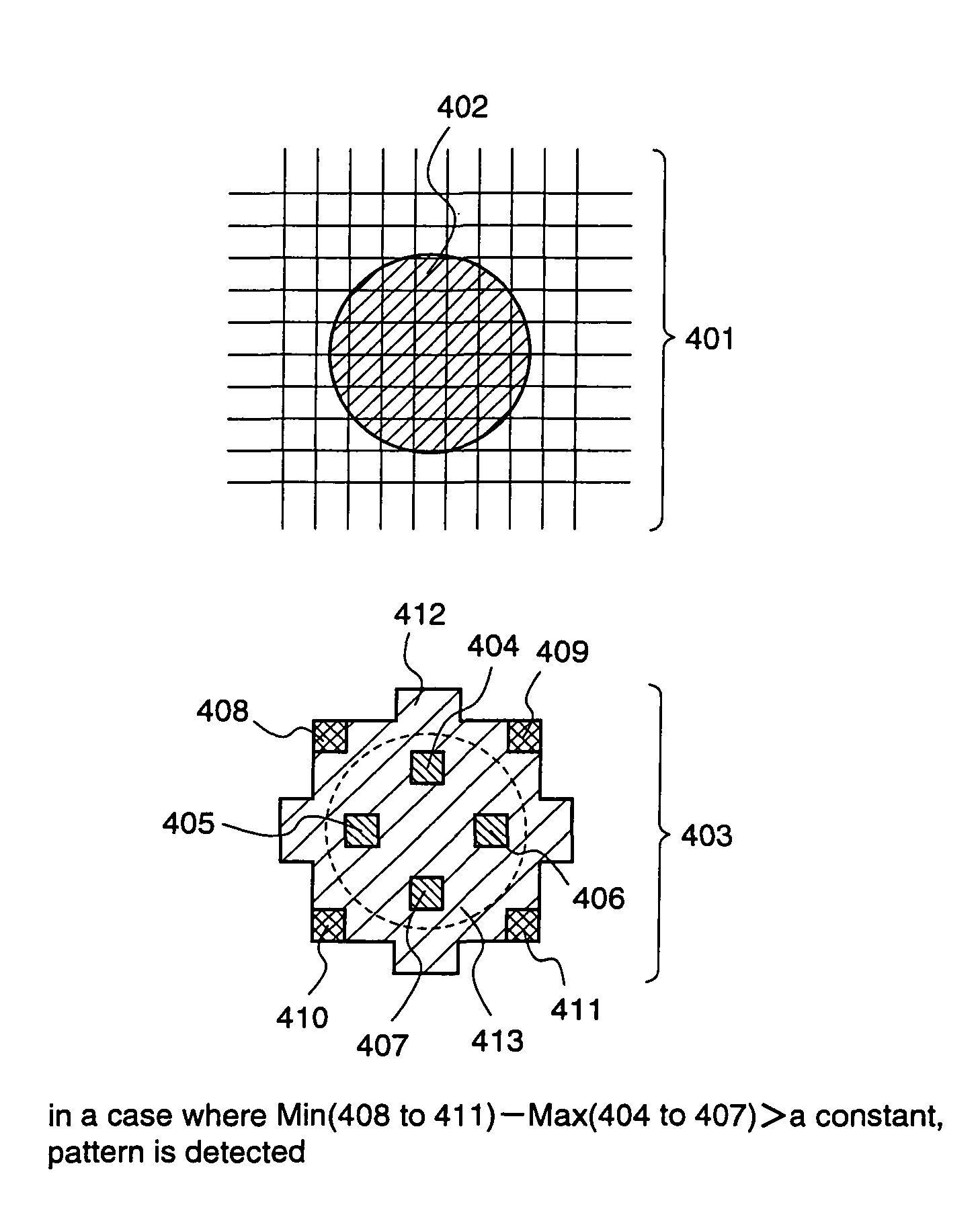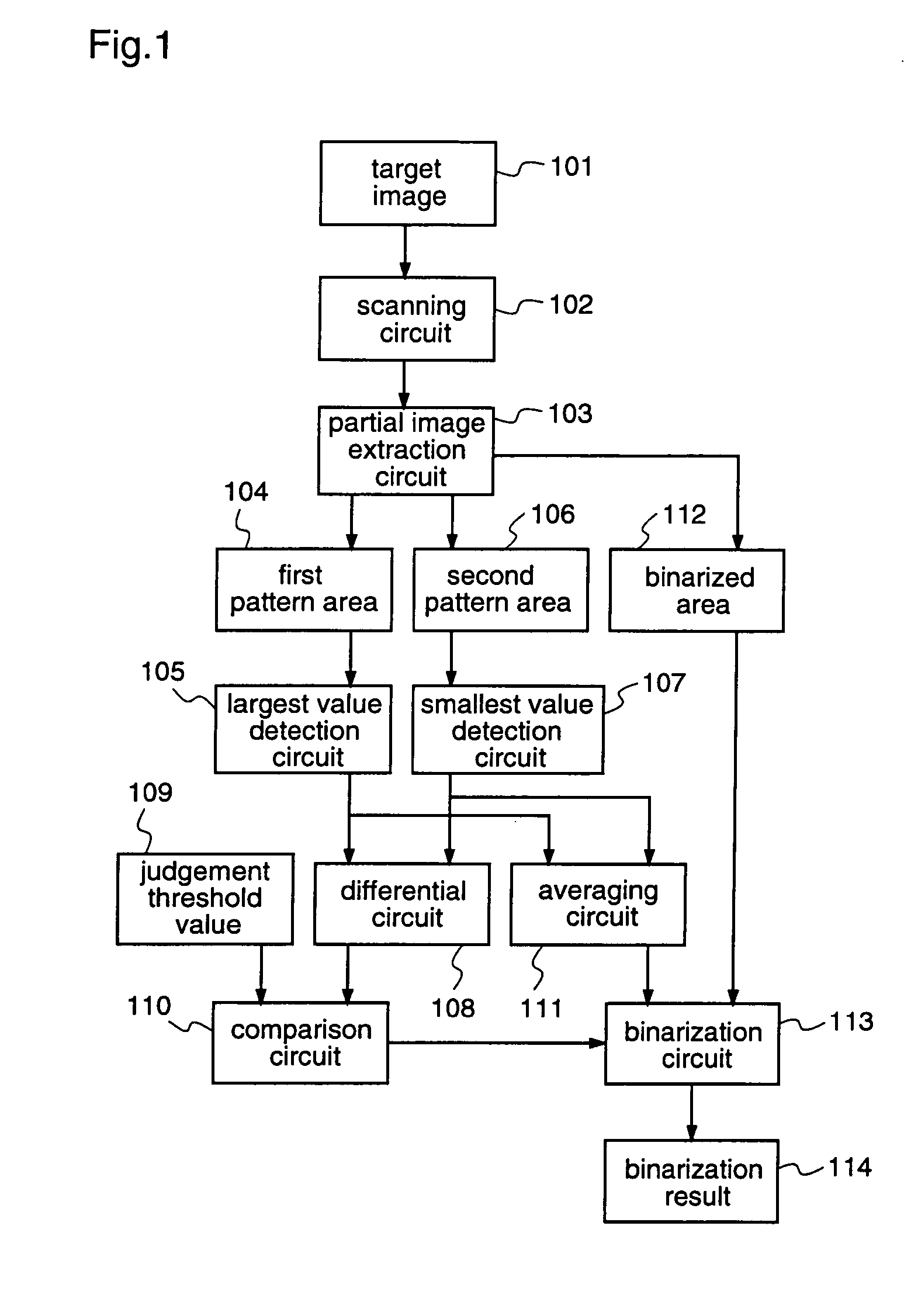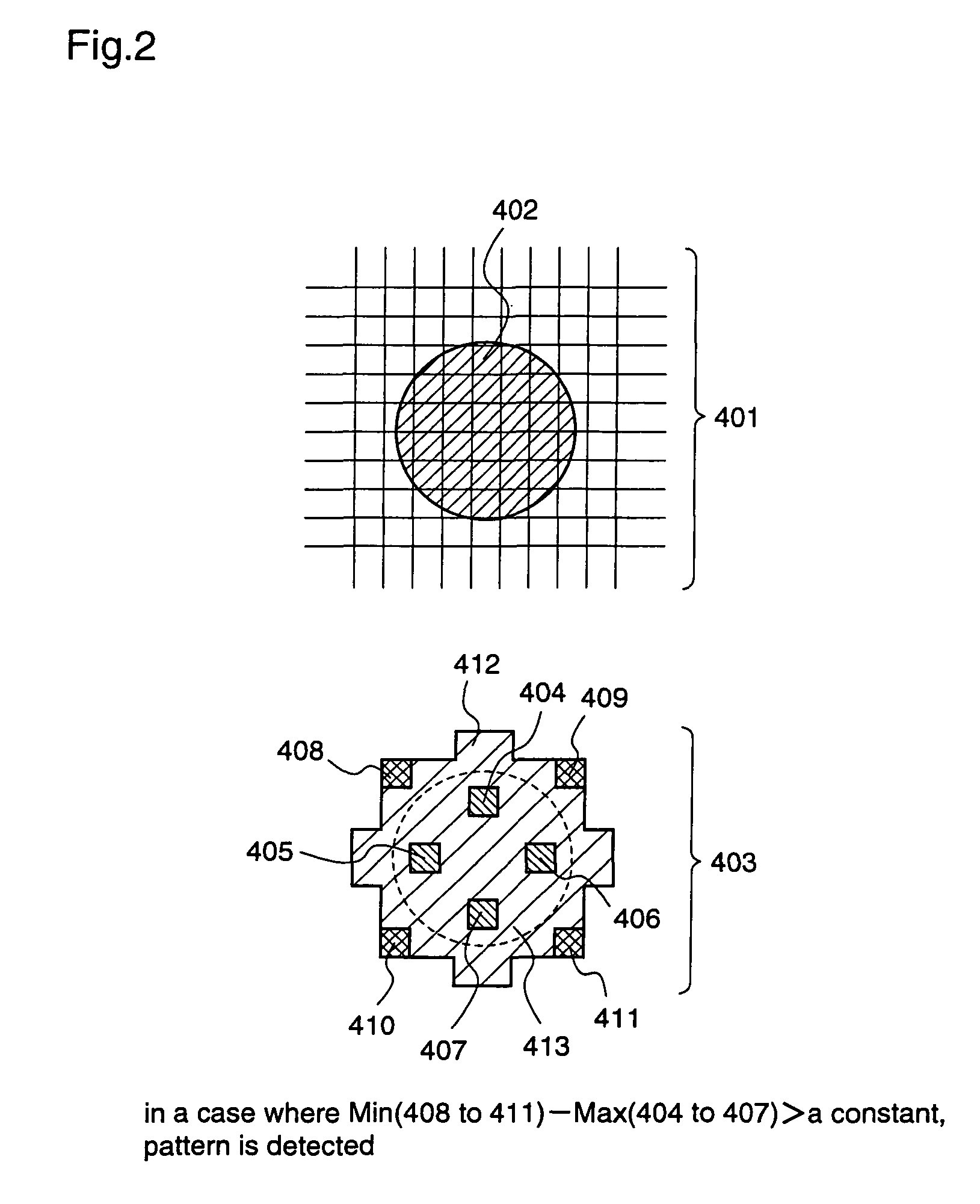Image recognition method and image recognition apparatus
a recognition method and image recognition technology, applied in image data processing, instruments, image analysis, etc., can solve the problems of large method, and large amount of operation, and achieve the effect of extremely reducing the amount of operations
- Summary
- Abstract
- Description
- Claims
- Application Information
AI Technical Summary
Benefits of technology
Problems solved by technology
Method used
Image
Examples
embodiment 1
[0064]As an example of an image recognition method and an image recognition apparatus according to a first embodiment of the present invention, a process of detecting a microbead (hereinafter, referred to as a bead) of a diameter of 10 μm from a microscope image will be described.
[0065]A target image is designated by the reference numeral 202 shown in FIG. 9, and is a digital image of 1024 pixel width and 768 pixel height in which each pixel has any of 256 gradations as a luminance. As the luminance becomes higher, the luminance value is represented as the higher value. A large number of beads appear in the target image 202, and the purpose is to extract the areas of these beads.
[0066]FIG. 2 illustrates an example for setting a pattern area according to the image recognition method of the first embodiment. In FIG. 2, a reference numeral 401 represents an enlarged vicinity of a bead as the target image in which a bead 402 appears dark. The image is photographed when a light is applie...
embodiment 2
[0082]Next, an image recognition method and an image recognition apparatus according to a second embodiment of the present invention will be described. While in the first embodiment, a conceptual construction and operation according to the present invention is described, a more specific embodiment will be described next.
[0083]FIG. 3 shows a target image. The upper part of FIG. 3 shows a target image 501 photographed by a microscope and a plurality of beads appear inside. The target image 501 is 640 pixels wide and 480 pixels high in the image, and each pixel has any of 256 gradations ranging from 0 to 255. As a frame of reference of the image, the upper left corner is (0, 0), and the right direction is the plus direction of x-axis while the downward direction is the plus direction of y-axis in the image. Thereby, when a pixel in the lower right in the image is represented as a coordinate, it is (639, 479).
[0084]While some hundreds of beads appear in an actual target image, 6 pieces ...
embodiment 3
[0107]Next, an image recognition method and an image recognition apparatus according to a third embodiment of the present invention will be described.
[0108]While in each of the above-described embodiments the pattern presence judgement method in the case of the shape of the discrimination target being round is described, the presence judgement method for the other shapes will be described with reference to the drawings. FIG. 7 illustrates a mask pattern used for detecting the discrimination target having a square shape. A reference numeral 901 represents an outline shape of the square as the discrimination target, and all the areas indicated by the same hatching as that for the part indicated by a lead line 902 are the first pattern areas. Similarly, a reference numeral 903 represents the second pattern area.
[0109]When it is judged whether or not a specific pattern is present in the discrimination target, in a case where the smallest luminance of the luminances contained in the seco...
PUM
 Login to View More
Login to View More Abstract
Description
Claims
Application Information
 Login to View More
Login to View More - R&D
- Intellectual Property
- Life Sciences
- Materials
- Tech Scout
- Unparalleled Data Quality
- Higher Quality Content
- 60% Fewer Hallucinations
Browse by: Latest US Patents, China's latest patents, Technical Efficacy Thesaurus, Application Domain, Technology Topic, Popular Technical Reports.
© 2025 PatSnap. All rights reserved.Legal|Privacy policy|Modern Slavery Act Transparency Statement|Sitemap|About US| Contact US: help@patsnap.com



